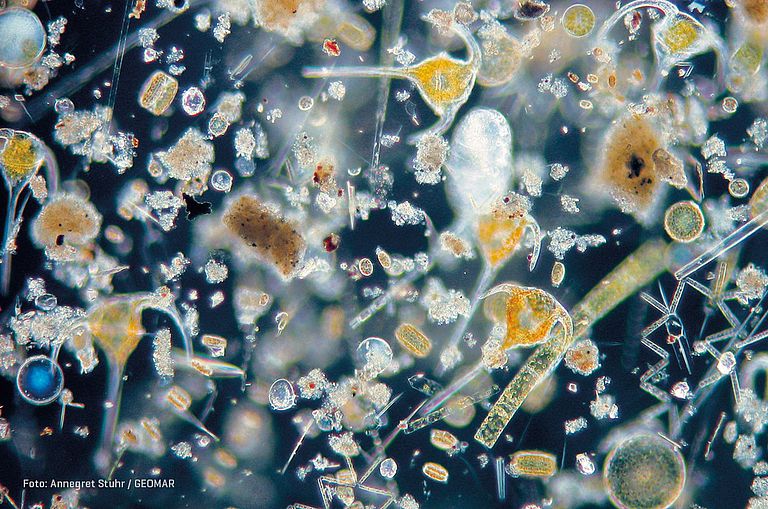Image of the Month: September 2021
The diversity of phytoplankton can only be seen under the microscope
Did you know that half of the oxygen currently generated by photosynthesis is produced in the ocean? The phythoplankton, i.e. microscopic plants, are essentially responsible for this process. It may come as a surprise that these plant algae, called phytoplankton, produce as much oxygen as plants on land, including the majestic tropical forests. Phytoplankton is not only important for oxygen supply, it also forms the basis of most food webs in the ocean by providing food for tiny animals called zooplankton and subsequently for fish and thus indirectly for humans. Some species of these small algae can also have negative impacts on animal and human health when they proliferate excessively and produce toxins that accumulate in fish and seafood and are then consumed by humans. Massive changes in phytoplankton are expected due to the effects of climate change in the ocean such as acidification and warming. At GEOMAR, evolution experiments are being carried out in the laboratory to investigate whether and how quickly plant plankton can adapt to these new conditions. It turns out that phytoplankton can adapt relatively quickly, but that there are also limits to this ability and that other factors, such as nutrient deficiencies, can slow down the adaptation.
Photo: Annegret Stuhr / GEOMAR



